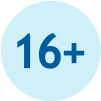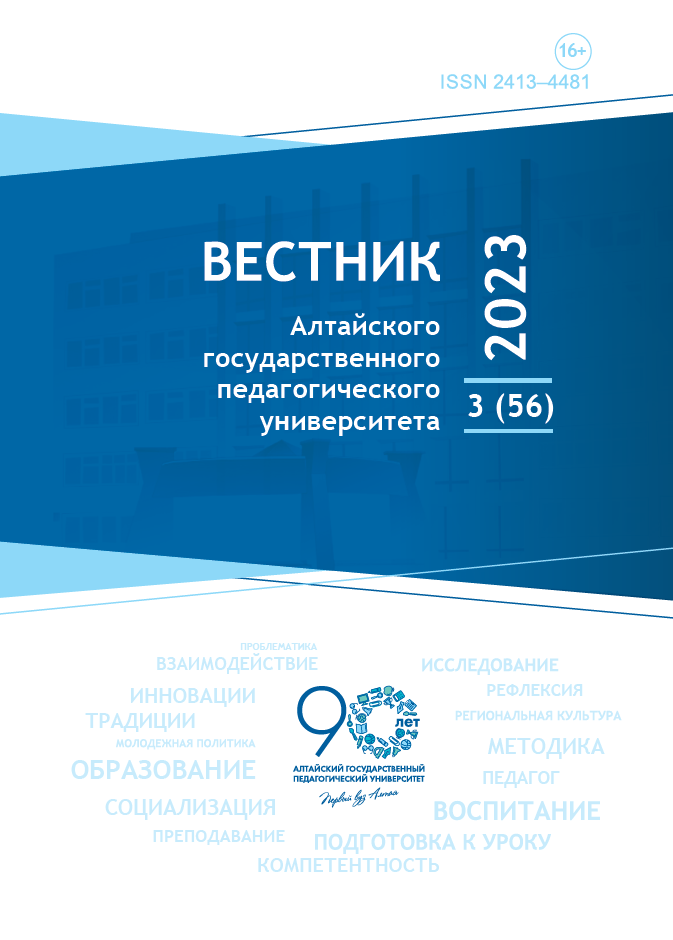

The impact factor of the RSCI is 0,138
ISSN 2413-4481
DOI prefix 10.37386/2413-4481
The order of submission of materials for publication:
The electronic version of the article is sent via the author’s personal account, available at: https://journals-altspu.ru/vestnik.
Requirements for writing a scientific article in a journal
“Vestnik Altayskogo gosudarstvennogo pedagogicheskogo universiteta”
Articles in Russian that have not been previously published and submitted for publication in other issues are accepted for publication.
The article should be at least 15,000 and not more than 30,000 characters (with spaces), including a bibliography, information about the authors, tables and illustrations. The article should be prepared in a text editor Microsoft Word. Times New Roman type, A4 format, single line spacing, 12 type size, all fields 2 cm each, indentation 0.8 cm. File name - author's last name.
When using additional fonts when typing an article, the author submits them to the editor in the their electronic folder.
Illustrations (photographs, drawings, tables, graphs, charts, etc.) are additionally provided as separate files in JPEG or TIFF formats with a resolution of at least 300 dpi, the name of which indicates the author's name and number of the figure.
References to the literature are given in numbers in square brackets indicating the serial number of the source and page. If a reference needs to specify several sources, they are given in parentheses through a semicolon, for example [1, p. 25; 3, p. 60].
References to illustrations (photographs, figures, tables, graphs, diagrams, etc.) in the text are given in parentheses, for example (Fig. 2, Table 1). In the text of the article, where the author plans to post the illustration, a caption is given to it, which should contain:
1. Type (“Fig.”, “Table”) and serial number in Arabic numerals (unsigned No.).
2. Name (thematic title).
3. Information about the place of storage of the original, archival or museum details, authorship.
4. For maps and drawings - an explication in which symbols and scale are explained.
The bibliographic list is given after the main text in the order of mentioning or citing in the text of the article. Only one name is allowed under one number. In the text of the article with a repeated reference to it, the number that was used the first time is indicated in square brackets. Literature in a foreign language is given in the order of mentioning in the general list. The list is drawn up according to GOST R 7.0.5-2008.
Design Example:
The structure of the article must contain
In the introduction, the relevance, novelty and feasibility of developing the topic should be substantiated, the problem under study should be formulated, a brief review of the scientific literature on the problem needed to understand the main part of the work should be presented, the abbreviations and terms used in the article should also be defined.
In the main part of the article, it is necessary to disclose the principal propositions and results of scientific research, scientific facts obtained personally by the author, discovered patterns, relationships, tendencies; disclose the program of the experiment, methods of obtaining and analysis of the actual material; indicate the author’s personal contribution to the achievement and implementation of the main conclusions, etc. A scientific article should be written in a modern literary language, apprehensible to a wide range of readers.
You should not overload the text with quotations; after the quote, you must indicate the source of the citation. The author is responsible for the reliability of the information, accuracy of citation and references to official documents and other sources.
In the conclusive part, it is necessary to formulate conclusions, recommendations, theoretical and practical significance of the results obtained, indicate possible directions for further research.
Articles that do not meet the specified requirements are not accepted. Manuscripts are sent by the editorial board for independent examination and are accepted for publication upon receipt of a positive review. If there is a negative review, the final decision on the publication of the article is made by the editorial board.
Sent materials will not be returned. Correction is not sent to the authors.


The impact factor of the RSCI is 0,138
ISSN 2413-4481
DOI prefix 10.37386/2413-4481